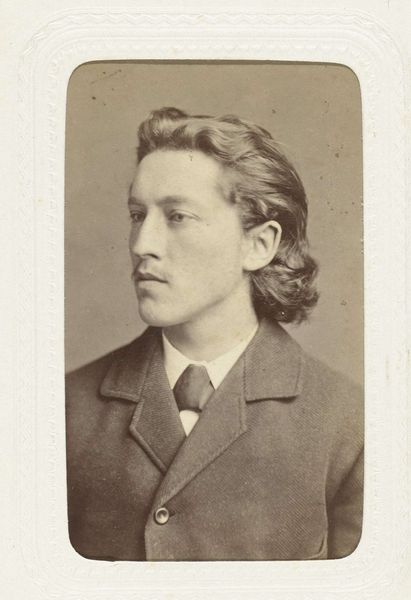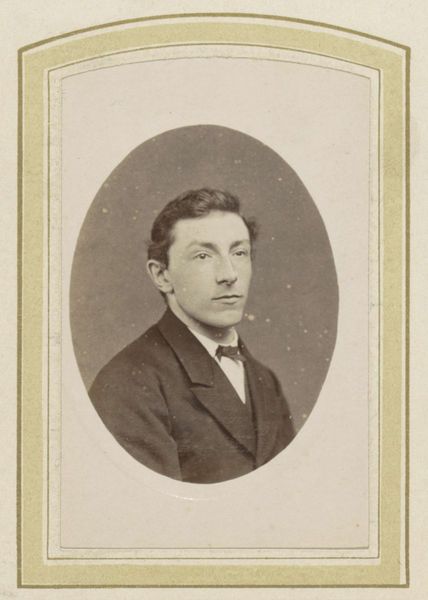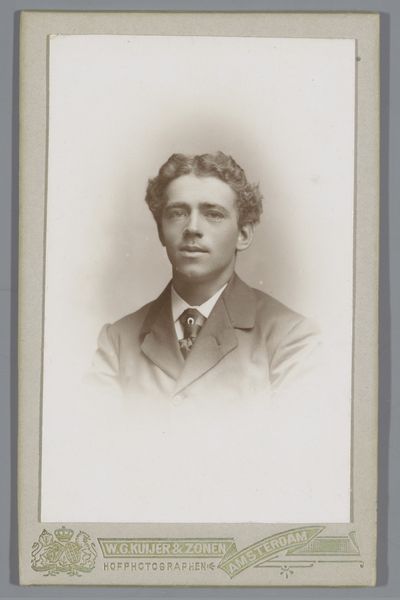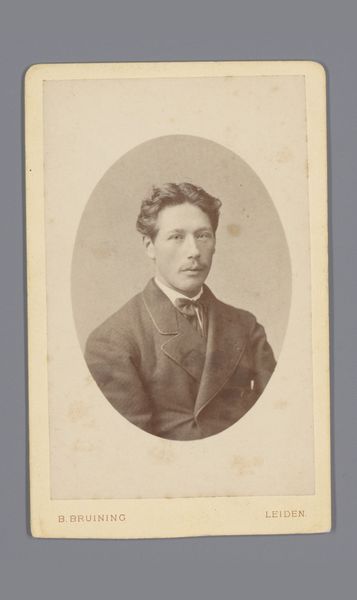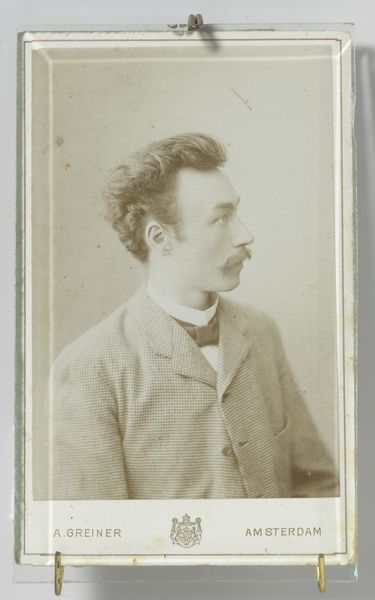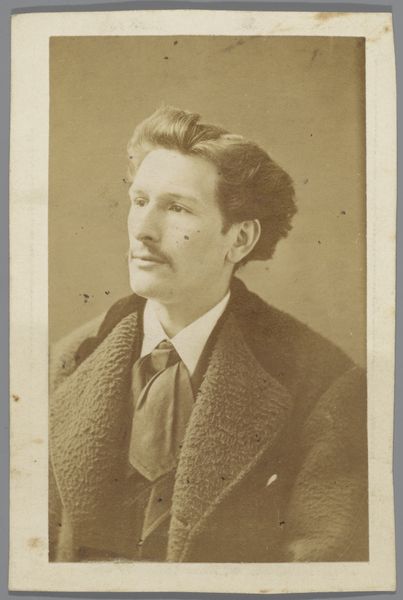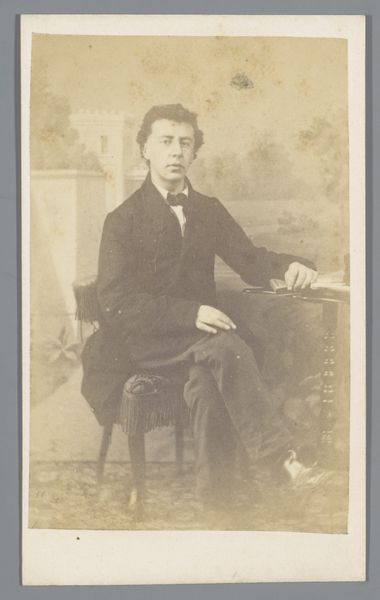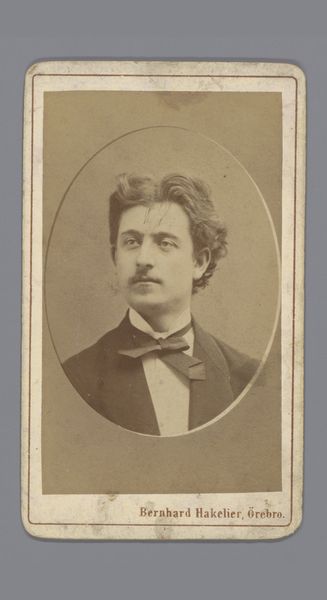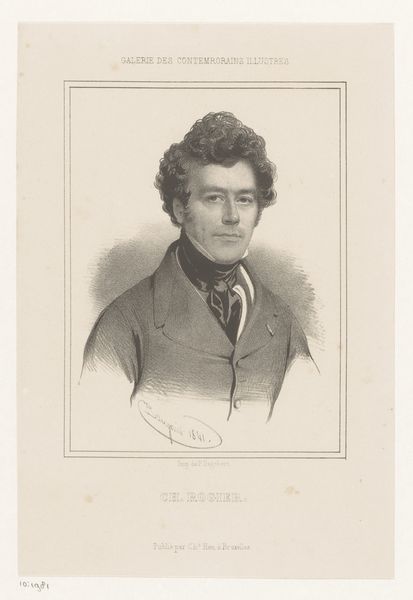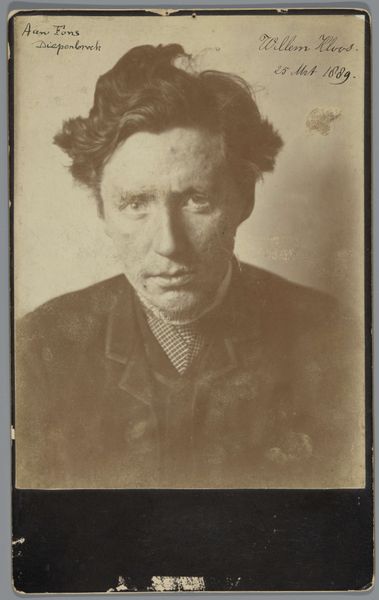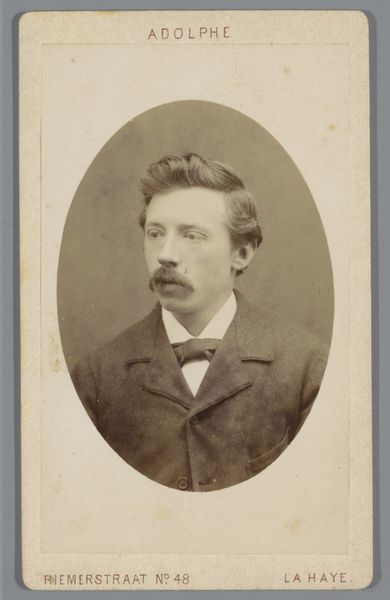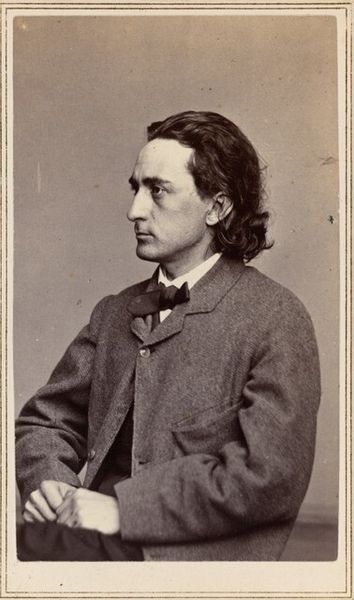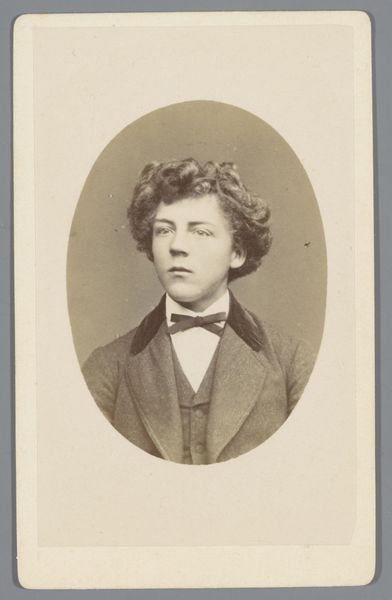
photography, gelatin-silver-print
#
portrait
#
impressionism
#
photography
#
gelatin-silver-print
Dimensions: height 89 mm, width 58 mm, height 104 mm, width 65 mm
Copyright: Rijks Museum: Open Domain
This portrait of Karel Witsen was made by Albert Greiner in Amsterdam using a photographic process, likely albumen print, that was popular in the latter half of the 19th century. The photograph itself is a material document, speaking to broader economic and social conditions. The mass production of images was becoming increasingly common due to the rise of industrial capitalism, which allowed for faster and more efficient production methods. The albumen print process involved coating paper with albumen from egg whites, then sensitizing it with silver nitrate to create a light-sensitive surface. The material qualities of the photograph, such as the texture and sepia tone, are a direct result of this. The photograph signifies the labour involved in its creation, from the photographer's skill in capturing the image to the workers involved in producing the necessary materials. This shift reflects changing attitudes towards art and craft, challenging traditional hierarchies and highlighting the value of skilled labor in a rapidly industrializing world. By considering the materials, processes, and social context, we gain a richer understanding of the photograph and its place in history.
Comments
No comments
Be the first to comment and join the conversation on the ultimate creative platform.
